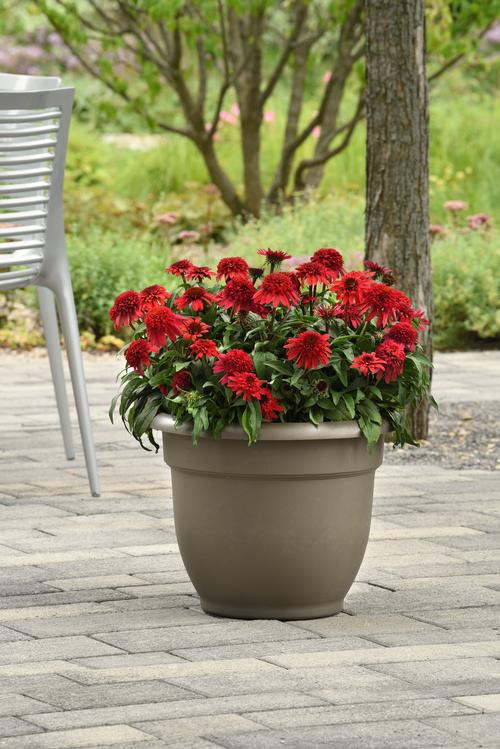Echinacea 'Orange Fascinator' ppaf
Coneflower
Sold Out
A Growing Colors™ exclusive, from breeder Marco van Noort, stunning dark orange fully doubled flowers are showy and will appear summer through fall, upright and clumping habit.
- · Tons of flowers in summer and fall
- · Attracts birds and butterflies
- · Compact growth habit
Recommended Substitution

Echinacea 'Double Scoop™ Strawberry Deluxe'
Coneflower
More compact, better branching and a higher flower count than the typical double-flowered Echinacea. More reliable first year flowering.
More Info
| Item # | Pack | Size | Avail Units | Avail Plants | |
|---|---|---|---|---|---|
|
4519315
|
30 | 3" Plug | SOLD OUT | SOLD OUT | Login for Pricing |
Height:
16-18 in
Zone:
4-9

Echinacea purpurea 'Orange Fascinator'
Exposure
| • | Sun Tolerant |
| • | Morning Sun / Afternoon Shade |
Soil Moisture Needs
| • | Dry |
| • | Average Soil |
Nature Attraction
| • | Attracts Butterflies |
| • | Songbirds |
Critter Resistance
| • | Rabbit Resistant |
| • | Deer Resistant |
Attributes
| • | Long Blooming |
| • | Drought Tolerant |
| • | Good Cut Flower / Foliage |
Season of Interest (Flowering)
| • | Summer |
| • | Late Summer |
| • | Fall |
| • | Late Summer / Early Fall |

